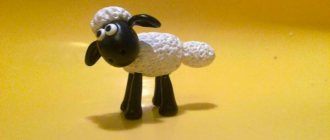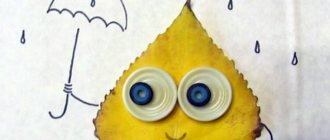Topic of the week: “Pets”
Children should know:
- names of domestic animals: cow, cat, dog, goat, horse, pig, sheep, ram, horse; - names of cubs and family: calf, kitten, puppy, foal, lamb, piglet, kid; — the concept of “pets”; - the external signs of each, what they eat, how they voice; - where they live, what benefits they bring;
Expanding children's vocabulary:
Nouns : animal, horse, horse, foal, foals, cow, bull, calf, calves, sheep, ram, lamb, lambs, goat, goat, kid, kids, pig, hog, piglet, piglets, dog, dog, puppy, puppies, cat, cat, kitten, kittens, head, muzzle, ears, body, four paws (legs), horns, wool, tail, house, man, benefit, wool, meat, milk, leather, herd, farm, stable, hay, swill, horns, mane, hooves, barnyard, cowshed, kennel, booth, stable, pigsty, pasture, sheepfold, milkmaid, machine milking operator, pig farm, groom, shepherd, shepherd.
Adjectives : necessary, useful, kind, herbivorous, domestic, fluffy, smooth, horned, fierce, affectionate, evil, stubborn;
Verbs : start, feed, look after, protect, love, neigh, moo, bleat, meow, grunt, bark, meow.
Finger gymnastics “Burenushka”.
Give me milk, Buryonushka, (children show the cow’s “horns”, bend their index finger and little finger) At least a drop on the bottom. Kittens are waiting for me, little kids. Give them a spoonful of cream (they bend one finger at a time, starting with the little fingers, on both hands) A little cottage cheese, on both hands. Butter, curdled milk, milk for porridge. Cow's milk gives everyone health! (The cow’s “horns” are shown again)
Grammatical structure of speech
— Didactic exercise “One-many” (formation of plural nouns):
cat - cats - many cats foal - foals - many foals dog - dogs - many dogs kitten - kittens - many kittens pig - pigs - many pigs horse - horses - many horses
— Didactic exercise “Call it affectionately” (formation of nouns with diminutive suffixes in singular and plural):
cow - cow horse - horse cat - kitty sheep - sheep dog - dog sheep - sheep ram - lamb
— Didactic exercise “Count to five” (coordination of nouns with numerals):
One cat, two cats, three cats, four cats, five cats One cat, ..., five cats One dog, ..., five dogs One horse, ..., five horses One sheep, ..., five sheep One cow, two cows, three cows , four cows, five cows
— Didactic exercise “Guess who it is?” :
Guards, chews, barks? – the dog grunts, digs? - The pig neighs, runs, jumps? – Does the horse meow, lap, scratch? – cat Moos, chews, walks? - cow
— Didactic exercise “Who has who?” (word formation exercise):
Goat - goat - kids Cow - bull - calves Pig - boar - piglets Horse - horse - foals Dog - dog - puppies Sheep - ram - lambs Cat - cat - kittens Goat - goat - kids
— Didactic exercise “Who gives what voice?”:
The horse neighs. The sheep bleats. The dog barks and growls. The cat purrs and meows. The pig grunts. The cow moos.
— Didactic exercise “Whose? Whose? Whose?" (formation of possessive adjectives):
Dog kennel. - Whose kennel? - dog. Milk from goats, cows. - Whose milk? - goat, cow. Horns of ram, cow, goat. - Whose horns? - lamb, cow, goat. Tail of a horse, cat, dog. -Whose tail? - horse, cat, dog. Hooves of a cow, horse. -Whose hooves? - cows, horses. Goat beard. - Whose beard? - goat. Cat paws. -Whose paws? – feline.
— Didactic exercise “Who lives where?” (use of the nominative case of nouns):
lives in a barn (who?) - a cow lives in a pigsty (who?) - a pig lives in a kennel (who?) - a dog lives in a barn (who?) - a sheep, a ram lives in a barn (who?) - a goat
— Didactic exercise “Continue the sentences”:
The dog barks, gnaws bones, guards... (house). The horse neighs, grazes... (in the meadow). The cat purrs, catches mice... (in the basement).
— Didactic exercise “Correct the sentence”:
The dog cackles at strangers. — The dog barks at strangers. The cow gives wool. - The cow gives milk. The cat pecks at the milk. - The cat laps the milk. The pig growls in the trough. - The pig is splashing in the trough. The cat grunts on the sofa. – The cat is purring on the sofa.
— Didactic exercise Compose a story about a pet according to plan.
This is a goat, a domestic animal. The body is covered with fluffy hair. The head is small, elongated, with protruding horns. Loves green grass. Produces tasty meat, milk, wool. A goat lives in a barn, a stable.
What are the benefits of pets for children?
As a rule, children are very drawn to pets, communication with animals changes them for the better: it is not for nothing that in Russia and abroad animal-assisted therapy (therapy using animals) is used for the development and education of children and for conducting correctional classes. What are the benefits of contact with animals?
Animals develop a child's powers of observation
The behavior of domestic animals is simpler than ours, so it is easier for a child to notice the characteristics of pets, their habits and reactions to new things. Usually, kids are happy to watch their pets, often sharing their observations with their elders: “Mom, I gave the hamster a napkin, and at night he made a nest out of it!”
Animals teach children to recognize emotions
It is easy to understand by your pet's behavior when he is scared or interested, sad or happy. Such a living “atlas of emotions” allows the baby not only to learn to closely monitor a friend’s condition, but also to better understand his own feelings, and it is precisely in the awareness of emotions that lies the key to their control.
With the help of animals, a child improves communication skills and learns compassion
Building interaction with an animal teaches a child to better understand others and to be attentive to those who are weaker. Research shows that children who have a pet at home are more attentive to other children, their empathy is better developed, and communication difficulties are less likely to occur.
Animals reduce stress
Research confirms that the company of a pet who will definitely not criticize makes children feel more confident and less worried. For example, American researchers noticed that children learn new words better in the presence of a dog than one on one with an experimenter. Some parents share their experience that children are more willing to read aloud to their pets.
Animals teach children responsibility
Taking care of a cat or dog is a lot of work, which, of course, is beyond the capabilities of a small child, but even a preschooler can cope with simple tasks, for example, changing the water in a bowl or replacing the filler for a tray. It is important for children to have daily tasks at home that they can complete independently. Caring for a pet can be such a challenge.
Animals increase family physical activity
A mandatory walk with the dog may sometimes cause unpleasant emotions, but it becomes a regular physical activity. In cities, even children tend to lead a sedentary lifestyle, so such a responsibility will only benefit all family members.
Animals teach children to cope with difficult events
Unfortunately, the life of pets is not long, so older children will certainly face the loss of a pet. Some may say that this is unnecessary stress for the baby, but, on the other hand, acquaintance with death will come sooner or later, and the loss of an animal is still easier to bear than the loss of a relative or friend.
Animals become the context for developmental activities
In daily care and training, you can include elements of exercises that develop memory, attention and thinking in children. By observing your pet, you can find similarities with other animals, note individual traits, count cups of food; very young owners can develop speech by repeating the sounds of their pets. You can come up with many other exercises that will certainly interest your baby, because it concerns his pet!
Animals teach respect for nature
Properly organized communication between a child and an animal contributes to the development of a caring attitude towards living beings and nature in general. The child learns that all living things have feelings, understands how you can and cannot communicate with animals, and becomes more attentive to the world around you.
Animals open up new possibilities
Communities of animal owners are always very diverse interest groups. Literally every city hosts exhibitions and competitions, lectures and master classes, where even a child can acquire a new hobby and new friends with similar interests. Or maybe this will be a hobby for the whole family?
Pets contribute to the development of children: kids learn more about behavior and emotions, become more attentive and responsible, and broaden their horizons. Connecting with nature reduces stress and teaches a child to care about the world around him.
Advice from a speech therapist to parents
Show the child (if possible living) domestic animals - a cat, a dog, a cow, a goat, a horse, a pig, a sheep. Discuss the external signs of each, talk about what they eat.
Tell children how pets benefit people.
Read poems, stories about pets, look at illustrations.
Sample questions for children:
— Why are these animals called “domestic”? — What benefits does (horse, cow, sheep, etc.) bring to people? - Why does a horse have hooves on its legs? - Why can’t you hear the cat walking?
Things to think about before getting a pet
First of all, you need to understand that you are getting a pet not only for your child, but also for yourself. If the child is still small, then most of the responsibilities for caring for the pet will fall on your shoulders. Think about whether you are ready to take on a new burden of responsibility and new worries. By getting an animal, you are getting a new family member who will require not only a lot of attention and time, but also certain financial expenses. It is also worth considering whether your living conditions allow you to have a pet.
If you live in your own home, you can have any animal. And in a small apartment, even fish may not find a suitable place. If you are still not ready to keep a pet, then it is better not to get one. Otherwise, when you decide to give the animal away, it can be a big tragedy for both the child and the pet.
Dangers from Pets
Animals can be dangerous to children. First of all, it's an allergy. If a child or someone in the house is prone to allergic reactions, it is not recommended to get an animal.
Also, many animals are carriers of various infections that a child can very easily catch. Therefore, if you get a pet, you need to periodically show it to the veterinarian and take the necessary tests. The danger can also come from large breed dogs. Such dogs are physically stronger than a child, so it is better not to have them.
It is also not recommended to have dogs with an unbalanced psyche. If you choose the right pet, take a responsible approach to raising it, and provide careful care, then all dangers can be minimized.
Weigh the pros and cons and choose the pet that is best for your child. Believe me, this will be the best gift for him! Good luck!
If it is impossible to have an animal
If for some reason you cannot or do not want to have a pet, do not be discouraged: there are many opportunities to provide your child with interaction with animals.
Look out for petting zoos or farms where your little one will be allowed to pet a llama, feed a baby goat, or hold a bunny. In horse clubs, most often you can just take a walk and feed the horses carrots. Don’t forget about kennels for sled dogs, such as huskies: their owners not only let you ride in a sled, but also play with their animals. Another good option is regular trips to visit friends and relatives who have pets. Remember that communication with the animal world is very useful for the development and socialization of a child, and try to organize this communication!
Article on our Yandex.Zen channel







